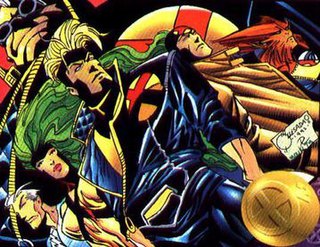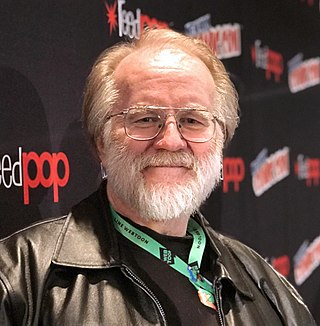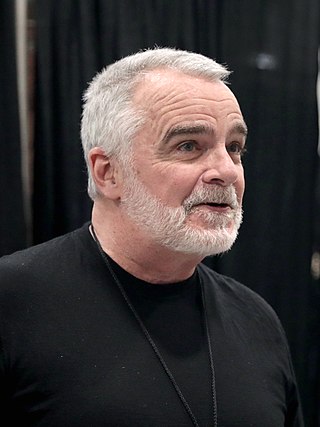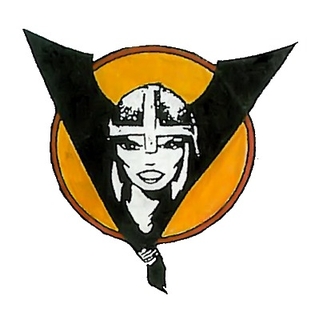
X-Factor is an American comic book series published by Marvel Comics. It is a spin-off from the popular X-Men franchise, featuring characters from X-Men stories. The series has been relaunched several times with different team rosters, most recently as X-Factor (2020), written by Leah Williams.

The X-Men are a superhero team appearing in American comic books published by Marvel Comics. Created by artist/co-plotter Jack Kirby and writer/editor Stan Lee, the team first appearing in The X-Men #1. Although initially cancelled in 1970 due to low sales, following its 1975 revival and subsequent direction under writer Chris Claremont, it became one of the most recognizable and successful franchises of Marvel Comics. They have appeared in numerous books, television shows, the 20th Century Fox X-Men films, and video games. The X-Men title may refer to the superhero team itself, the eponymous comic series, or the broader franchise including various solo titles and team books such as the New Mutants, Excalibur, and X-Force.

John Lindley Byrne is a British-born American writer and artist of superhero comics. Since the mid-1970s, Byrne has worked on many major superheroes; with noted work on Marvel Comics' X-Men, She-Hulk and Fantastic Four. Byrne also facilitated the 1986 relaunch of DC Comics' Superman franchise, the first issue of which featured comics' first variant cover.

Christopher S. Claremont is a British-born American comic book writer and novelist, known for his 16-year stint on Uncanny X-Men from 1975 to 1991, far longer than that of any other writer, during which he is credited with developing strong female characters as well as introducing complex literary themes into superhero narratives, turning the once underachieving comic into one of Marvel's most popular series.

X-Men, also known as X-Men: The Animated Series, is an animated superhero television series which debuted on October 31, 1992, in the United States on the Fox Kids Network. X-Men was Marvel Comics' second attempt at an animated X-Men TV series after the pilot, X-Men: Pryde of the X-Men, was not picked up.

Mastermind is a supervillain appearing in American comic books published by Marvel Comics. He most often appears as an adversary of the X-Men. The original Mastermind was a mutant with the psionic ability to generate complex telepathic illusions at will that cause his victims to see whatever he wishes them to see. He was a founding member of the first Brotherhood of Evil Mutants and later a probationary member of the Lords Cardinal of the Hellfire Club, where he played an important role in "The Dark Phoenix Saga".

Brent Anderson is an American comics artist known for his work on X-Men: God Loves, Man Kills and the comic book series Astro City.

Airboy is a fictional aviator hero of an American comic book series initially published by Hillman Periodicals during the World War II-era time period fans and historians call the Golden Age of comic books. He was created by writers Charles Biro and Dick Wood and artist Al Camy.

Crimson Fox is a codename for two fictional characters, both superheroines appearing in American comic books published by DC Comics.

"The Dark Phoenix Saga" is an extended X-Men comic-book storyline published by Marvel Comics, focusing on Jean Grey and the Phoenix Force. It was written by Chris Claremont with art by John Byrne.
Phil Elliott is a British comic book creator who was published in Escape Magazine. He was part of the British small press comics scene in the 1980s.

Howard Mackie is an American comic book editor and writer. He has worked almost exclusively for Marvel Comics and is best known as the co-creator of the Danny Ketch version of the Ghost Rider character.
The Eagle Awards were a series of awards for comic book titles and creators. They were awarded by UK fans voting for work produced during the previous year. Named after the UK's Eagle comic, they were launched in 1977 for comics released in 1976.

Valkyrie Press was a British publisher of comics that operated from 1987 to 1989. It published Fox's Redfox, and Bryan Talbot's The Adventures of Luther Arkwright, both of which won Eagle Awards. Valkyrie Press was owned by Redfox co-writer Chris Bell and jointly operated by Bell and Redfox artist Fox.

Graham Manley is a British comic artist.

Harrier Comics was a British comic book publisher active in the mid-to-late 1980s. Harrier was notable for putting out black-and-white comics in a mold more similar to American comics than to typical British fare.

Dark Phoenix is a 2019 American superhero film based on the Marvel Comics X-Men characters. It is a sequel to 2016's X-Men: Apocalypse, the ninth installment in the X-Men film series, fourth and final installment of the prequel films and the twelfth installment overall and the first X-Men film without the involvement of Hugh Jackman as Wolverine. It is also the final installment in the X-Men film series to be produced by Bad Hat Harry Productions, though the company was uncredited due to sexual assault allegations made against Bryan Singer on January 23, 2019. It was written, co-produced, and directed by Simon Kinberg and stars an ensemble cast featuring James McAvoy, Michael Fassbender, Jennifer Lawrence, Nicholas Hoult, Sophie Turner, Tye Sheridan, Alexandra Shipp, and Jessica Chastain. Dark Phoenix tells the origin story of Jean Grey's transformation into the Phoenix, which is triggered by a cosmic force that enhances her psychic abilities. The story follows Jean's gradual descent into madness after the force unleashes repressed traumatic memories from her childhood, causing both her emotions and powers to become unstable, threatening the people she loves.

DragonLords, subtitled "Yet Another Fantasy & Sci-Fi Roleplaying Magazine", is a British role-playing game fanzine from the late 1970s and early 1980s. Self-published originally by Marc Gascoigne, Mike Lewis, and Ian Marsh, DragonLords produced 22 issues from c. 1978 to 1985.
Martin Lock is a British comic book critic, writer, and publisher. As publisher of the fanzines BEM and Fantasy Advertiser, and then publisher of Harrier Comics, he was an important figure in British comics fandom in the 1970s and 1980s.
















